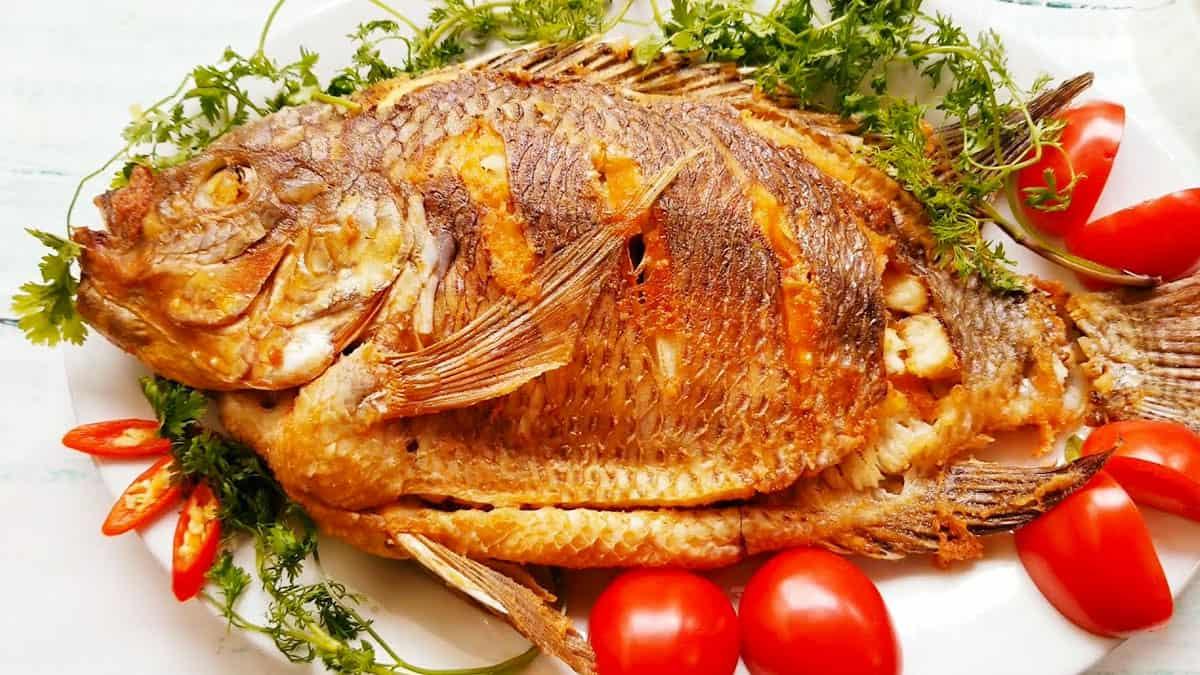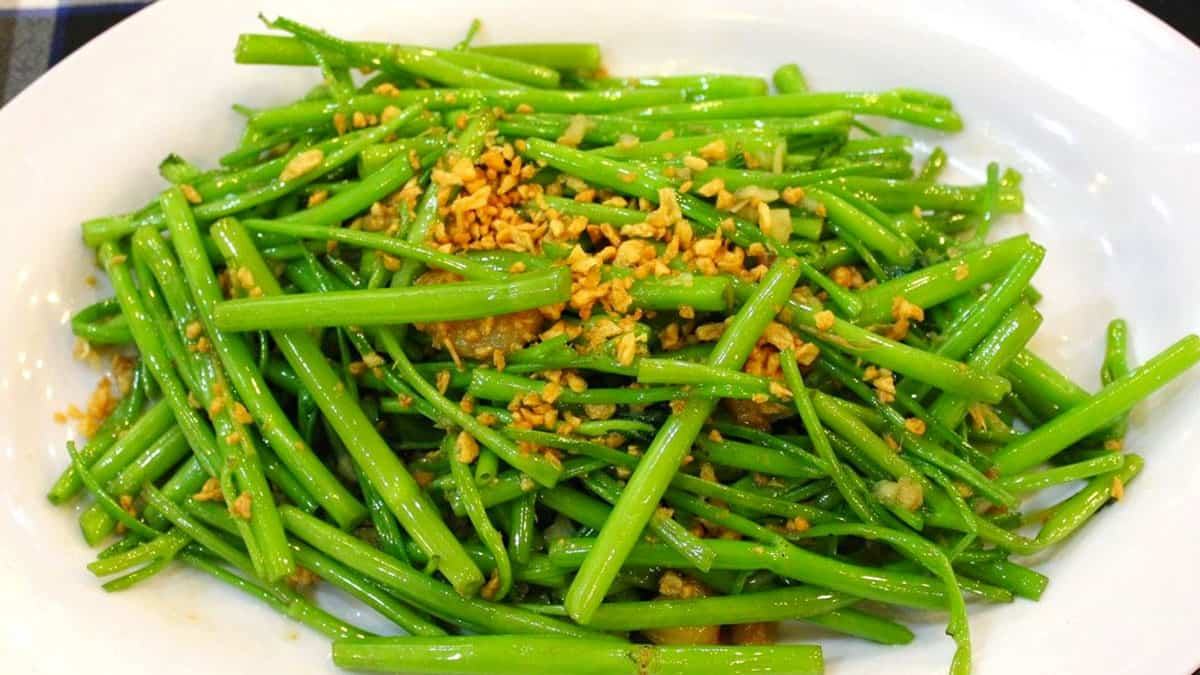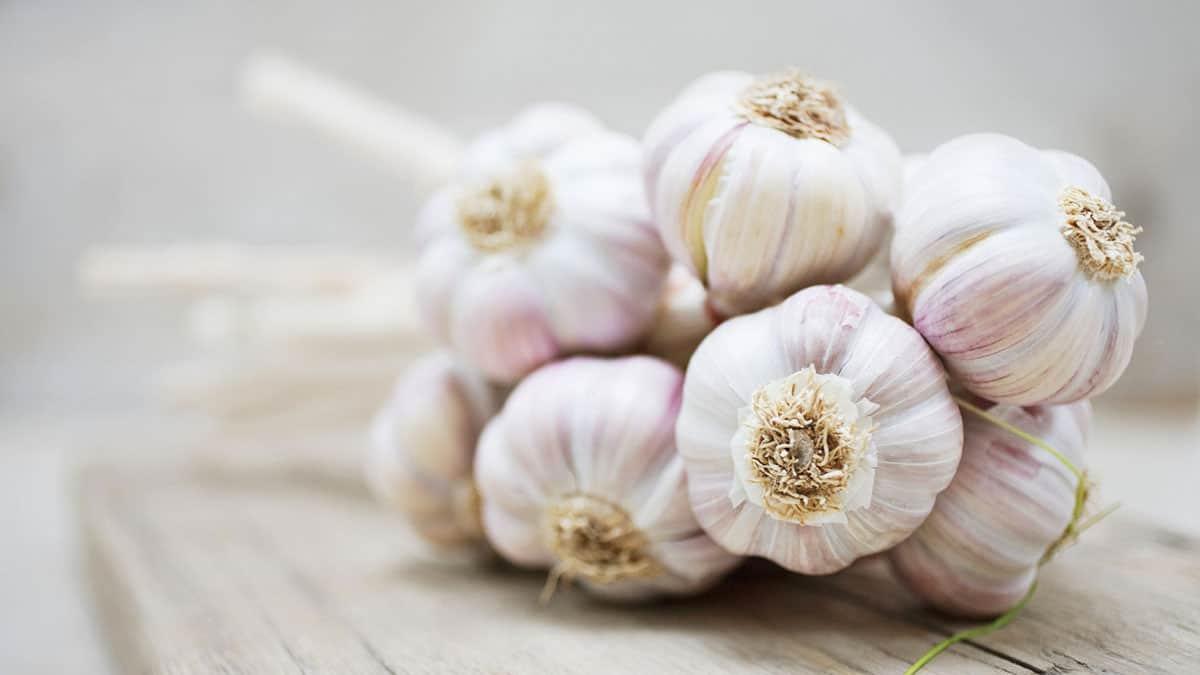Cooking tips and tricks are small techniques, secrets, or special methods that improve the cooking process and the final outcome of dishes. These cooking hacks can help you work quickly, efficiently, and create more visually appealing and delicious meals.
One common kitchen challenge is preventing oil splatter when frying fish or meat. These splatters can cause unpleasant burns and affect the aesthetic appeal of the dish. Many people avoid cooking these dishes altogether due to this concern, which limits meal options.
To enjoy perfectly fried fish or meat without worrying about oil splatter, a useful cooking tip is to use salt. This simple yet effective trick can be applied as follows:
Heat the cooking oil in a pan on the stove, ensuring it’s not too hot. Then, sprinkle a bit of salt into the oil. Next, pat dry the fish or meat thoroughly and carefully place it into the pan to fry. This method helps reduce oil splatter, allowing you to cook with more confidence. You’ll achieve crispy, golden-brown fried fish or meat without the hassle of dealing with oil burns.

Another tip you can apply to prevent oil splatter is using cornstarch. You can sprinkle a bit of cornstarch on the surface of the meat or fish, as it effectively absorbs moisture. This helps to reduce the amount of water released from inside the food during frying, minimizing splattering and making the fish or meat crisper and more visually appealing.
Cooking Hack – How to Make Crispy Roast Meat Without Drying Out
Roast meat is highly favored for its crispy skin, juicy fat, and tender meat. Even without specialized rotisserie equipment, you can achieve this dish at home using just a frying pan.
The trick shared by experts at Tophotel is to pierce the meat skin evenly with a needle or fork. Instead of using too much sugar, especially without honey at first, marinate the meat. To make it easier to fry, marinate the meat and store it in the refrigerator for thất lên để
oil

In addition, to minimize nutrient loss in food, you can add water while cooking. The procedure involves briefly stir-frying the vegetables, then seasoning them and adding about 3 tablespoons of warm water. This helps maintain the food’s temperature without causing it to cool down, thereby preserving beneficial nutrients.
Safe Seasoning Tips
Salt and sugar are spices that easily evaporate when cooking, affecting the overall flavor of the dish and compromising the enjoyment of the meal.
A useful cooking hack in this case is to avoid adding seasoning right from the start. Instead, cook the ingredients briefly to absorb the oil and heat. Afterward, you can add salt and sugar. This allows the seasonings to evenly penetrate the food, and the dish won’t become overly salty. For boiled vegetables, add salt only just before turning off the heat to preserve the nutrients.
Tip to Reduce Strong Spice Odors
Garlic, shallots, ginger, or turmeric add delightful flavors to dishes, but some people may find these aromas too strong. However, these ingredients are essential for perfecting many dishes.
Therefore, you should apply a cooking tip to reduce strong and overpowering smells. Instead of using spices directly, grind them and then extract their juices or squeeze them. This way, your dish will still have its characteristic aroma, following the recipe without being overwhelming for sensitive individuals. This cooking hack also ensures you’ll have a fresher breath after enjoying dishes with strong odors

How to Make Clear and Flavorful Broth or Soup
Achieving a clear and aromatic broth or soup, free from residue, is not always easy. Improper preparation of ingredients can result in cloudy broth and lackluster flavors. Additionally, the broth might not have the desired aroma. Therefore, it’s crucial to know how to remove odors and maintain clarity in your broth.
Experts at Tophotel recommend thorough preparation of ingredients. Specifically:
Meat Preparation: Quickly stir-fry meat before adding it to the pot. For thawed meat, blanch it briefly in hot water and then rinse thoroughly with cold water.
Cooking Process: Regularly skim off any foam that forms on the surface of the broth to prevent it from spreading and causing cloudiness.
These steps are key to ensuring your broth is clear, flavorful, and aromatic.
How to Cook Shrimp Without Strong Odors
Shrimp is a nutritious ingredient, beneficial for health. You should use this seafood regularly to boost immunity and stay healthy. However, cooking this seafood to maintain its sweetness, preserve its nutrients, and avoid unpleasant odors is not easy.
A useful cooking tip in this case is to prepare the shrimp thoroughly. Clean the shells with salt and lime; if the shrimp is peeled, avoid using lime to prevent meat repetition, resulting in taste loss. After washing thoroughly, drain and cook over high heat. Do not season with fish sauce as it can make the shrimp smell strong and may not be suitable for many people’s taste.
Removing the shrimp vein using a toothpick – A simple cooking tip
On the back of shrimp, there is a black vein that contains harmful toxins for the human body. Therefore, before cooking, you should clean this vein to ensure it doesn’t harm your health. However, it’s not easy to remove it from the back of shrimp, as it often breaks.
A small trick to remove this vein very easily is to use a toothpick. Leave the shrimp shell intact, then use a knife to cut along the middle, then skewer a toothpick in and pull the vein out. This method prevents it from breaking and allows you to remove the entire vein in one go.
Boil the eggs with ripe and overripe yolks
Eggs are easy to eat, containing many beneficial nutrients but not causing weight gain, so they are very popular. Each person has different eating preferences, such as ripe and overripe yolks. You can completely control this if you apply the cooking tips below
Poached eggs: You put water and eggs into a pot, and when the water starts to boil, let it simmer for about 4 minutes before turning off the heat. Then, scoop the eggs out and soak them in cold water to make them easier to peel. When eaten, the whites are soft and the yolks are runny, hence called poached eggs.
Eggs with soft-boiled yolks: You also calculate the time from when the water starts boiling, and after about 6 minutes, you turn off the heat. When peeled, the whites will be slightly firm, the yolks not fully cooked, known as eggs with soft-boiled yolks, with an extremely beautiful color.
Medium-boiled eggs: The time is counted from when the water boils until turning off the heat is 7 minutes. The yolks will be slightly sticky, yellow in color but not stiff or powdery.
Hard-boiled eggs: 9 minutes is sufficient time for the yolks to be fully cooked, with the whites being firm.
Creating beautiful color for braised dishes
Braised dishes such as fish and meat braised dishes always make many people feel excited. This color is created by sugar, coconut water or vegetable oil. To get the beautiful color, you should beat the sugar with a small fire and stir-fry the meat, fry the fish well. With coconut water, you will stew the delicious brown yellow.
News
Dawn Satley SPEAKS OUT in defense of Caitlin Clark from USA Basketball. She calls it the WORST draft decision in 40 years “The best players, the best talent”
What a comment this is. Having voiced my opinion over a month ago, I find it necessary to reiterate it from Paris: USA Basketball’s decision to exclude Caitlin Clark from the team stands as the most glaring player selection blunder…
Riley Gaines Chooses to Prioritize Her Principles Over a Lucrative Brand Deal, Declaring She Won’t Compromise Her Values for Financial Gain
In an era where corporate brands are increasingly attempting to align themselves with social and political causes, the intersection of marketing and activism has never been more prominent. Companies often seek to champion various movements and ideologies to resonate with…
Breaking: Michael Jordan Declines $200 Million Offer to Star in Commercial with LeBron James, Labels Him ‘Woke Creep
In a move that has reverberated through the corridors of sports and culture alike, Michael Jordan, the basketball legend whose name is synonymous with greatness, has reportedly turned down a colossal $200 million offer to star in a commercial alongside…
Whoopi Goldberg and Joy Behar’s Contracts for ‘The View’ Not Renewed for 2024: ‘We’re Removing Toxic People from the Show’
In a surprising turn of events that has left fans and industry insiders alike buzzing with speculation, ABC has announced that it will not be renewing the contracts of Whoopi Goldberg and Joy Behar, two of the most iconic co-hosts…
Ted Nugent and Oliver Anthony Join Forces for the ‘Long Live America’ Tour, Set to Deliver a High-Energy Musical Experience Across the Nation
In an electrifying announcement that has set the hearts of fans and patriots alike ablaze, iconic rocker Ted Nugent and rising country star Oliver Anthony have joined forces for an unforgettable musical journey across the heartland of America. Aptly named…
Breaking: Travis Kelce Appears as a Background Dancer on Taylor Swift’s Eras Tour
In an unexpected twist that has taken both the music and sports world by storm, Travis Kelce, the Kansas City Chiefs’ tight end known for his prowess on the football field, recently made a jaw-dropping appearance on stage at Taylor…
End of content
No more pages to load










